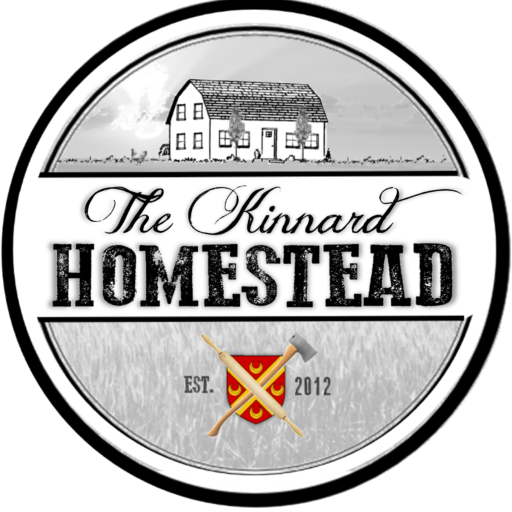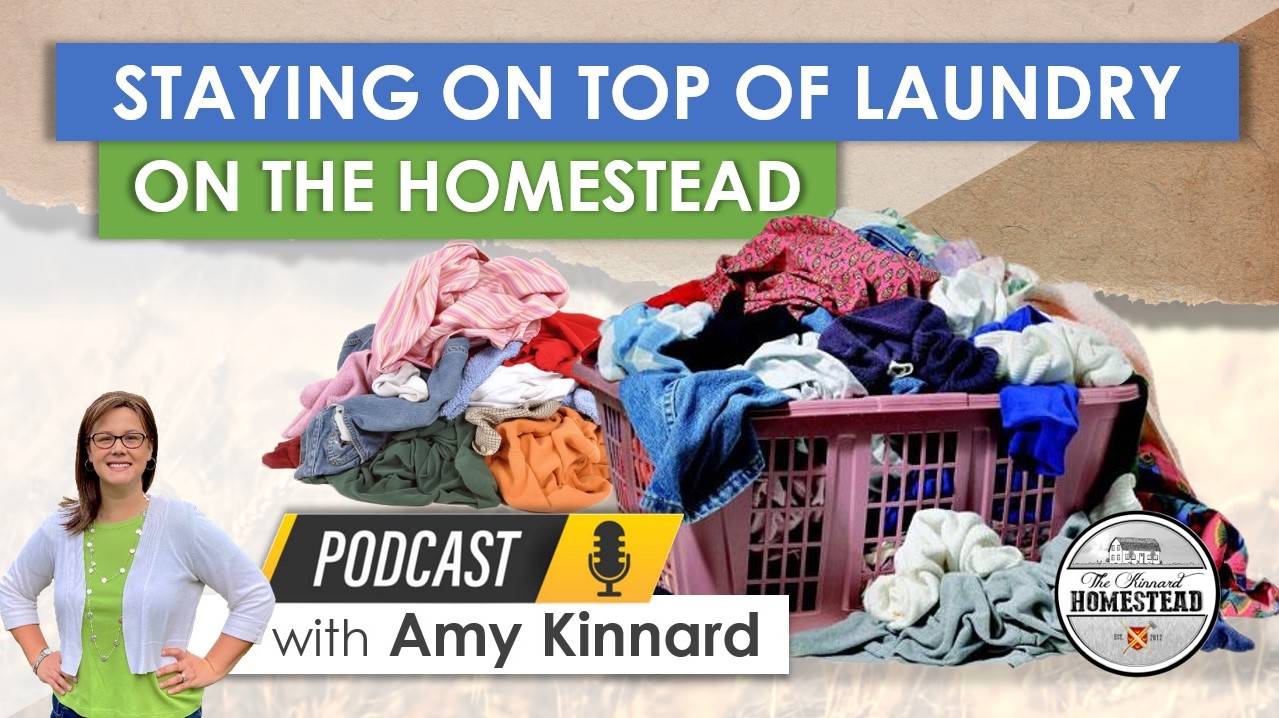The Food Freedom Act in Arkansas | 2021 Edition
In a couple of prior posts, I tackled the topic of “Cottage Foods.” In them I gave particular attention to the actual wording of Arkansas’ Cottage Food law, along with its various amendments, to try and summarize what is and isn’t allowed for a non-licensed and non-inspected home-based cottage food operation to do it’s thing.
If you’re interested in going back and reviewing those posts, I’ll encourage you to do that. Even though some of the information is now obsolete, understanding the history of the law and how things have gradually developed over time can be helpful.
To give my disclaimer, I’m no expert or final authority on this topic. If you want the official word on any of this information, you can contact Arkansas’ Department of Health, or UofA’s Division of Agriculture. I’m just a guy with a small homestead business who has partnered with his wife who loves working in the kitchen to make available to our customers some of her awesome culinary creations. To ensure we aren’t breaking any laws in the process, I’ve sought to understand the law to the best of my ability as a layman.
A New Amendment: "The Food Freedom Act"
In this post I want to update you on one more amendment that changes the law, and I should tell you it changes it quite extensively. Actually, we had already seen some changes earlier this year (2021). Back in March, we were given Act 306 that created new allowances for Cottage Food sellers. Again, I already commented on that in a previous episode if you want to go back and hear it. But then, the very next month during the same legislative session, we saw Act 1040 that has been named “the Food Freedom Act.”
Even though it’s technically just another amendment to the existing law, Arkansas’ Food Freedom Act changes things up so much that it’s being described as an all-out “replacement” to Arkansas’ Cottage Food law as it previously existed. Honestly, when you take a look at the changes that have been made, I think the word “replacement” describes it pretty well, since the law reads completely different than it used to.
So, if it helps, you can go ahead and take everything you’ve been taught about cottage food laws in Arkansas up to this point and just toss it to the side.
Actually, that may not be completely fair to say. You don’t need to throw away everything you know. For example, we’re still categorically talking about “cottage foods.” By definition, those are foods produced in a persons’ home and made available to a consumer but aren’t subject to licensing and inspection. That’s in contrast to a formal “food service establishment” such as restaurants, food stores, food warehouses, food manufacturing centers, etc. that are subject to licensing and inspection.
Fundamentally, we’re still talking about exemption from licensing and inspection. Assuming they follow the prescribed rules, home based kitchens (or “cottage food operations”) are exempt. For what it’s worth, they aren’t the only group that’s exempt because, while it’s probably a topic for another day, group homes and daycare centers serving 10 or less people; church potlucks and other group functions; farmers’ markets and roadside stands; maple syrup, sorghum, and honey producers; festival and special event vendors; and so forth—assuming they follow the right rules, all of those groups are exempt as well.
As it relates specifically to the rules a home-based kitchen is required to follow, under the prior “Cottage Food Law,” you may remember, I liked to organize things into three easy-to-understand parts, those parts being (1) the list of allowed items, (2) the labeling of those items, and (3) the locations they could be sold at. So, “the list, the labeling, and the locations.” I thought that was a pretty simple way to summarize it.
As I read through the new “Food Freedom Act,” I’ll be honest and say the information isn’t as neatly organized or easy to put in a pretty little package. That’s not to say I’m not happy with a lot of the content that’s in here. Just that, when it comes to explaining the content, I think a little more effort is needed to make it understandable.
So, to try and wrap my mind around it all, what I’ve done is taken the liberty to develop another alliteration. If we have to retire my old summary of the “list,” the “labeling,” and the “locations” that we had with the Cottage Food Law, we can summarize the new Food Freedom Act in terms of (1) its “design,” (2) it’s “definitions,” (3) it’s “dealing and distributing,” and (4) it’s “disclosures.” That’s in addition to several “exemptions” and “preemptions” that also apply.
I’ll give those categories to you again:
- #1 – The intended “Design,” or Purpose of the law.
- #2 – The relevant “Definitions.”
- #3 – The rules of “Dealing and Distributing.”
- #4 – The required “Disclosures” to the customer, and
- #5 – Several exemptions and preemptions that apply.
I admit that’s not as nice and neat of a package as what we had before, but I’m willing to work with it because of so many of the improvements that have been baked into the cake, no pun intended.
Actually, if you separate the “definitions” and the “exemptions and preemptions” parts of the law and simply treat those as references or addendums to the rest of it, I think we could condense our summary down to just three parts to the law: (1) it’s intended design, (2) it’s rules of dealing and distributing, and (3) it’s required disclosures.
So, I’ve decided that’s how I want to explain it.
THE INTENDED DESIGN
To begin with the intended “design,” or purpose of the law, there is, I think, a primary motive or principle in which the entire legislation is built on and that can be seen in the cited title and official act description to the law, that title being the “Food Freedom Act” and being described as, “[An Act] to exempt certain producers of homemade food or drink products from licensure, certification, and inspection…”
Clearly the asserted word in the title is “freedom” and the key word in the description is “exempt.” We’ve already established—and it’s a point I do try to emphasize in my other episodes—that the fundamental intent of the cottage food law as it was originally created is “exemption.” That is to say, the intent has been to loosen much of the regulatory red tape hindering home based kitchens. It hasn’t been to add more red tape. There’s a lot of history there but. believe me, before we had the cottage food law, home based kitchens were subject to the same rules as any other food production operation.
And while the law loosened a lot of the red tape, many home food producers felt it could be loosened a lot more than it was, hence a lot of the amendments we’ve seen. But now, with the Food Freedom Act, we’ve been given the greatest amount of wiggle room so far—so much so that “freedom” is now the apparent word of choice to describe it.
This is, after all, America. And while we can appreciate the state’s desire to regulate and to protect us from killing ourselves and our customers with potentially hazardous foods, we don’t need a food police that micromanages us so much that we can only produce a very short list of allowed qualifying items, treating us much like children who are told they can only cook with child-friendly recipes or child-safety rated equipment.
Granted, we’re still prohibited from producing and selling potentially hazardous foods, but rather than restricting us to a “big brother” controlled list of what items the state deems safe for us to work with, the intent now is to educate us on what potentially hazardous foods are by definition—and, get this, it’s not just foods anymore but now drinks as well—for us to be able determine in our own judgement what qualifies as non-potentially hazardous and thus safe to make and sell.
So, rather than giving us a restricted list of approved items, the law now defines a list of established criteria of what potentially hazardous technically means. I won’t go into all the details. I do go into it in a previous episode. Just to say, in the spirit of freedom, it’s now up to the home producer (and, I’d say it’s up to the consumer as well) to educate themselves on the technicalities of what makes something “hazardous” or what makes something “safe,” and to proceed accordingly. The point is personal responsibility. You’ve got to do your homework.
To further emphasize the point, the law states,
“The purpose…is to allow for a producer’ production and sale of homemade food or drink products for an informed end consumer and to encourage the expansion of agricultural sales at farmers markets, ranches, farms, and producer’s homes or offices”
Notice the words “allow,” “informed,” “encourage,” “expansion;” later the law uses the words “facilitating,” “enhancing,” “providing.” All of those words meant to steer your thinking away from thoughts such as “restricting,” “limiting,” “prohibiting.” Right? Again, freedom is the idea.
So, that’s the first part to mention. The intended “design” and spirit of the law is freedom—it’s to further loosen (if not begin slashing entire pieces of) red tape still knotted around your home kitchen.
THE RULES OF
DEALING AND DISTRIBUTING
The second part to the Food Freedom Act I want to point out is what I’m calling the “dealing and distributing” aspect of the law which has to do with the actual transaction of a homemade food or drink product between the producer and consumer.
Under the former Cottage Food Law, transactions were originally limited to “direct in-person sales” only at a short list of permitted locations including the site the product was made, that being your home, or a farmer’s market, a county fair, or a special event. That eventually expanded to pop-up shops and online platforms, and, during the social distancing COVID-era, a kind of presumed state allowance for points of distribution such as commuter lots or church parking lots. In all those cases, the qualifier was still for sales to made “directly to an end consumer.” “Directly” no longer meaning “in-person” necessarily, but presumably without the involvement of a third-party.
Now under the Food Freedom Act, all those same points of sale are still implied with even a few new places to go with them. For example, the law talks about being allowed to set up an actual “retail space” on the ranch, farm, home, or premises where the food was produced. I assume that could be as simple or fancy as you want to make it. I know some folks who have converted entire rooms, additions, or outbuildings into little dedicated farm stores for their customers. That’s allowed.
Also now allowed is the ability to sell “at a retail location of a third-party vendor of the homemade food or drink product.” Now, I’ll be honest with you, though I’m totally excited about that one, I’m personally a little confused by it. Because, the law also still explicitly states “a transaction [shall] be directly between the seller and the informed end consumer.”
That raises the question again. What does a “direct sale” mean? Well, as I’ve said earlier, it used to mean “in person” only and then it seemed to imply “no third parties.” Hence the rules that were applied to pop-up shops at unaffiliated established businesses where you could sell at a brick-and-mortar business, but not through the brick-and-mortar business. That is to say, you were set up with your own little table on their premises while you were doing the selling.
But now, being allowed to sell “at a retail location” the law clarifies that can be done “by an agent of the producer, or a third-party vendor, including a retail shop or grocery store.” That suggests you don’t have to be there at all. And yet, the law also still states transactions must be made “directly between the seller and the informed end consumer.” To me that’s a little confusing.
It only gets more confusing when you try to figure out what is meant not just by “direct sales” but what is meant by “end consumer.” Because repeatedly the law talks about selling to “informed end consumers” and, by definition, an “end consumer” is a person who is “the last person to purchase [your] product” and “does not resell [your] product.” Alright. If that’s the case, how is the third-party vendor selling your products? Are they buying your products wholesale and reselling retail? I suppose if this is an exception to the rule they are. Otherwise, I imagine this would be some sort of commission-based arrangement whereby sales are still your own, kept separate from the store sales, and cashed-out after the fact. I will mention how the law says that if the storefront also sells food and drink item that are subject to license requirements, your homemade items must be kept visibly separate from the others in its own display and storage. But, there again, it doesn’t say “sold separately” but simply “kept separately.” So, I’d love more clarity on that.
I did notice in its summary on the Food Freedom Act, UofA’s Division of Agriculture does claim the law allows for homemade food and drink products to be sold to retail stores in order to be resold. Though, if you look up the guidelines put out by the Arkansas Department of health, all it reiterates is that homemade products can be sold “to the informed consumer…by a third-party vendor.” If you’re paying close attention to how that’s worded, you’ll notice that conveniently leaves off the word “end” in the phrase “informed end consumer.” It also doesn’t say whether that means re-selling or simply selling on behalf of. So, seriously, if anybody can give a clear answer and explanation on that, I know I’d appreciate it.
It does seem the entire ability to sell homemade products through a third-party vendor, including retail shops and grocery stores, regardless of how that arrangement is supposed to work, is understood to be an exception and exemption to the larger rule which states that formal food service establishments, which grocery stores obviously are, along with all the food and drinks they sell, are subject to licensing and inspection. Hence why homemade products would need to be kept separately.
The point is, selling through third-party vendors is now allowed under the Food Freedom Act, as confusing as it is to me how that arrangement—how the transactions and bookkeeping—are meant to work. Hopefully someone out there can help me better understand whatever it is I’m missing.
Well, in addition to the addition of selling through a retail space at your home or a third-party vendor, the law also mentions being able to make transactions over the phone and online. The phone one is new, though we’ve already mentioned how online sales are also still allowed under the law. That, of course, implies the use of payment gateways and shipping options to complete a transaction. I talk about both of those things in an earlier episode if you want to go back and listen to that. Just to say, when dealing with a phone or online order, though payments are typically made electronically, your goods are being transferred physically. That’s going to take some form of delivery. Under the new law, that delivery can be arranged either by yourself, your agent, your third-party-vendor, or a third-party carrier of your choice. Most mail service carriers have rules pertaining to the shipment of foods, so you just need to read up on that.
If delivering locally or in the state, your options and rules should be straight forward. However, if delivering outside the state, you no longer have to think about just Arkansas laws and your mail carrier’s rules, but as soon as you cross state lines, you have to now think about that state’s laws and any federal laws that govern interstate commerce. Again, that’s something you need to read up on.
THE REQUIRED DISCLOSURES
The third and final part of the law I want to give attention to relates to the kind of information you are required to disclose to your customer and, furthermore, the kind of information your customer is expected to be aware of before deciding to buy your products. This is another development in the language I think I can appreciate because that’s one of the things I remember wishing for in my original episode on all of this—namely, for the freedom to educate and equip both consumers and producers so they can make their own informed decisions on what to buy, sell, and ultimately eat.
The law qualifies the need for your end consumer to be an “informed” end consumer. I take that to mean your customer holds some responsibility to educate themselves about your product before buying it. If after you’ve disclosed everything they need to know about what you’ve made they decide they’d like to buy and try that, it’s totally their prerogative to do so. The food police no longer needs to tell them they can’t.
Granted, before a consumer can educate themselves on everything they need to know, the producer must first thoroughly disclose all the information they need to know. What information is that?
Well, according to the law, “the following information shall be provided to the informed end consumer.” Five pieces of information are required:
- The date the product was made.
- Your name, address, and phone number, or an identification number provided by the Department of Agriculture if you’d rather your personal information be kept private.
- The common or usual name of the product.
- The ingredients of the product in descending order of predominance
- The following statement: “This product was produced in a private residence that is exempt from state licensing and inspection. This product may contain allergens.”
If you’re dealing with a product where the pH level would be in question, a sixth piece of information you’d want to provide, assuming you’re not working with some kind of department approved or laboratory certified recipe, is a unique batch number to be marked on your product, and then records maintained for your own safekeeping of your batch numbers and the dates you made them, along with your pH testing results and recipe information. Again, that’s only if it’s a product where pH levels are of concern.
Some of that other information was already required under the Cottage Food Law, while some of it is new and expanded. But before getting too bent out of shape about the hassle of having to explain all of that, remember, this is actually what we want. We want informed consumers. Why do we want informed consumers? We want informed consumers so they can make their own decisions without the state stepping in to make those decisions for them.
The big thing we need the customer to know is that what they are buying “is not regulated, inspected, certified, or subject to state packaging or labeling requirements” and “has not been processed in a facility that is subject to state licensing, permitting, inspection, or regulation.” What they’re buying is homemade. Let there be no false impressions. That doesn’t mean your products shouldn’t be as professional and as high caliber as you can make them, or that your goal is to make it look obvious your product was slapped together in a home kitchen. Show a little pride and make your products look as good as the professionals. Just be sure you’re disclosing the fact that you’re not a professional. The way you do that is to provide information already mentioned.
How are you going to provide that information? The law gives several methods:
- First, if your product is packaged or offered from a bulk container, a label with all that information needs to be placed on the package or the container and, if it is from a bulk container, a written print-off with the same information should be provided to the customer upon purchase.
- Second, if your product isn’t packaged or offered from a bulk container, then a placard or sign with the needed information should be visibly displayed at your point of sale.
- Third, if your product is offered online, the information needs to be included on the website page the product is sold on.
Disclosing to the consumer everything they need to know about your product in an easily accessible manner, and allowing them to decide if they want to buy or not, is all for the sake of promoting food freedom in Arkansas.
CONCLUSION
It may all seem like a more confusing set of requirements and criteria to have to worry with and wrap your mind around compared to the simplicity of the prior Cottage Food law, but I’m hopeful there can always be some clarifying future amendments to clean up the choppiness.
The great thing about Arkansas’ Food Freedom Act is that more freedom is being put into the hands of the home producer and consumer. Obviously with greater freedom comes greater responsibility. I think that translates to more steps on your part to educate yourself, to educate your customers, and to apply the needed steps to be a home-based food business that, though not licensed and inspected, is still professional and above par.










